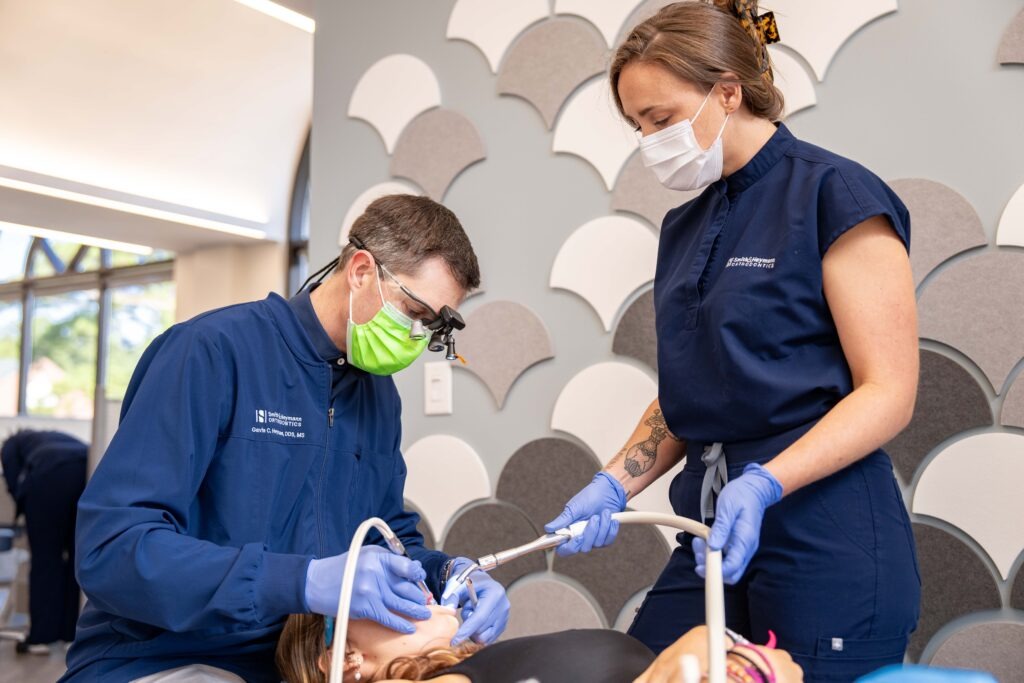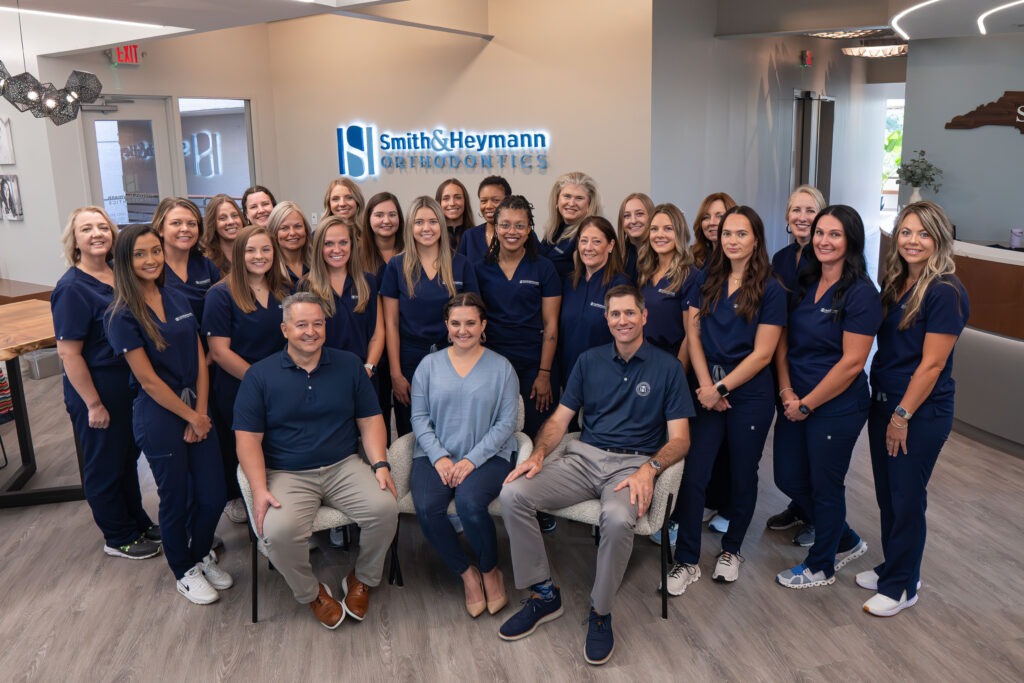Here at Smith & Heymann Orthodontics, it’s not over for us when you leave the office. We believe in comprehensive care, and that means answering your biggest questions and concerns. If you or someone you love has recently gotten braces, then this is the place for you — without further ado, here’s your guide to your first week in braces.
Step #1 – Managing Initial Discomfort
So, you’ve just had your braces installed. What should you do first? While the bonding procedure is entirely painless, it’s normal to experience some minor discomfort afterward. This discomfort arises from the consistent pressure the newly introduced orthodontic appliances apply to your teeth. Rest assured, this discomfort is manageable and temporary.
Over-the-counter medications like acetaminophen and ibuprofen can be your allies in alleviating this discomfort. To maximize their effectiveness, consider taking a recommended dosage of these medications about an hour before your bonding session, allowing them to kick in before any potential discomfort arises.
Step #2 – Start with Soft Foods and Cold Drinks
During the initial stages of wearing braces, it’s beneficial to ease into your regular diet. Opt for softer foods that are easier to chew or even foods that require minimal to no chewing. This approach reduces the workload on your teeth, helping to alleviate any soreness you might experience. Additionally, sipping on cold drinks can provide soothing relief to your teeth and gums, contributing to your overall comfort.

Step #3 – Wax Can Help
In your first week with braces, your tongue, gums, and cheeks may not be accustomed to the presence of the new orthodontic appliances. This can sometimes lead to irritation as these soft tissues come into contact with the braces. To mitigate this issue, it’s wise to keep orthodontic wax readily available. Simply apply the wax to any brackets or areas of the archwire that cause discomfort. This simple solution allows your mouth to adapt to the new additions gradually.
Step #4 – Prioritize Oral Hygiene
Maintaining excellent oral hygiene is of paramount importance, especially when you have braces. While you may already have a good brushing routine, It’s particularly important to address the specific challenges that may arise with braces, such as keeping your brackets free from plaque.
A Closer Look at Plaque:
Plaque continuously forms in your mouth through the interaction of sugary and starchy foods with the natural bacteria in your mouth. The unique design of braces creates additional spaces for plaque to accumulate. However, a robust dental hygiene routine prevents plaque from evolving into stubborn tartar.
In keeping with our commitment to our amazing patients, check out these tips for oral hygiene during orthodontic treatment:
Tip #1: Consistency Is Key
Never skip a brushing session, especially after consuming snacks, particularly those with sugary or starchy content. Maintaining a consistent brushing schedule ensures the health of your teeth and braces.
Tip #2: Rinse Before You Brush
Before embarking on your brushing routine, it’s beneficial to rinse your mouth thoroughly with water, ensuring a comprehensive swish. This practice helps dislodge food particles from hard-to-reach areas, including between your brackets and teeth.
Tip #3: Angle Matters
Utilize a soft-bristled toothbrush and nonabrasive toothpaste, positioning the brush at a 45-degree angle from your teeth and gum line. Brush gently but thoroughly, paying special attention to areas where plaque is prone to accumulate—these include the spaces between your teeth and brackets, along the gum line, and other less accessible areas.
Step #5 – Prioritize Mouthguards
Did you know that over $500 million is spent annually on treating avulsed teeth, which are teeth that have been torn or dislodged from their root structures? Shockingly, many of these injuries result from physical activities, particularly organized sports. In fact, statistics from the American Dental Association indicate that 13-39% of tooth and jaw injuries are sports-related, with a significant portion occurring in popular sports such as Football and Soccer.
Protecting your teeth and jaws is paramount, especially when you have braces. If you engage in contact sports, it’s highly advisable to consider the use of a mouthguard. Furthermore, ensure that you comply with recommended guidelines for mouthguard usage to maximize its effectiveness.

Step #6 – Reach Out with Questions
We’re grateful you’ve decided to spend some time with us today to learn a little more about how to handle your braces. Have more questions? Reach out! Dr. Smith, Dr. Heymann, and Dr. Skillestad love talking to our amazing patients, and we’re always here to help. We’re Durham, Chapel Hill, Mebane, and Roxboro’s family favorite, and consultations are always 100% free! We’ll see you soon!

